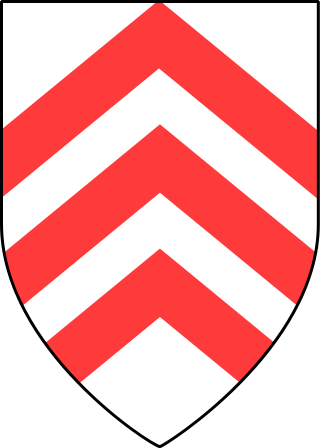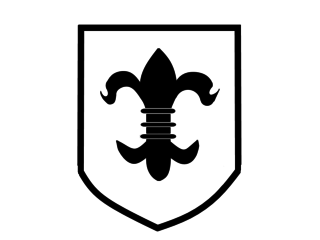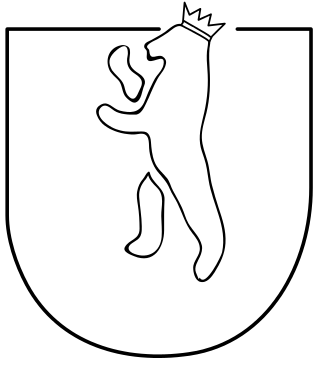
The 13th Panzer Division was a unit of the German Army during World War II, established in 1940.

The 78th Infantry Division, later known as the 78th Assault Division, was a German infantry formation which fought during World War II. After the 78th Assault Division was destroyed near Minsk in July 1944, the 78th Volksgrenadier Division was created.

The 61st Infantry Division was a combat division of the German Army during the Second World War. Towards the end of the war, it became the 61st Volksgrenadier Division.

The 100th Jäger Division, initially designated 100th (Light) Infantry Division, was a light infantry division of the German Army during World War II. As such, it was provided with partial horse or motor transport and lighter artillery. Light divisions were reduced in size compared to standard infantry divisions. The Walloon Legion was briefly attached to this division from January 1942 to May 1942. During the latter stages of the war, the division was composed of members from most of Germany's geographic areas and many German-speaking Walloons (Belgian/French) and the People from Upper Silesia

The 6th Infantry Division was a unit of the German Army during World War II.

The 246th InfantryDivision was a division of the German Wehrmacht during World War II. Towards the end of the war, it was redeployed under the name 246th Volksgrenadier Division.
The 320th Infantry Division was an infantry division of the German Wehrmacht. It existed from 1940 to 1944. In late 1944, the division was reassembled as the 320th Volksgrenadier Division.

The 45th Infantry Division was an infantry division of the army of Nazi Germany during World War II. Towards the end of the war, the division was reassembled into a second iteration, the 45th Volksgrenadier Division

The 94th Infantry Division was a German Army infantry division in World War II.

The 82nd Infantry Division was a German Army infantry division in World War II. The 82nd was part of the sixth Aufstellungswelle of German infantry divisions.

The 31st Infantry Division was a German infantry division of the Army during World War II. It participated in the invasion of Poland in 1939 then the invasion of France and the Low Countries in 1940. As part of Panzergruppe 2. of Army Group Centre, it was involved in the invasion of the Soviet Union in June 1941. After hard fighting throughout 1941 and 1942 it joined the 9th Army and fought in the Battle of Kursk in July and August 1943. Along with the rest of the 9th Army, the division conducted a fighting withdrawal for the remainder of 1943, during which it sustained heavy casualties. In the early stages of the Soviet Operation Bagration of June to August 1944, the 31st Infantry Division was destroyed, a fate which subsequently befell most of Army Group Centre. The division was officially disbanded on 18 July 1944.
In the German Wehrmacht before and during World War II, infantry divisions were raised as part of a designated Aufstellungswelle or Welle (wave), sometimes translated as "draft". The Aufstellungswelle system was adopted by the Wehrmacht in late 1938. Peacetime units were the first wave, and 34 other waves followed until the 35th wave in April 1945. Several types of divisions were organized by Aufstellungswelle, including infantry, security, shadow and Volksgrenadier divisions.
The 153rd Grenadier Division, sometimes referred to as 153rd Infantry Division in Wehrmacht documents, was an infantry division of the German Heer during World War II. It was founded under the name Division No. 153, and also carried the names Commander of Reserve Troops III, 153rd Reserve Division, and 153rd Field Training Division. It was first deployed in August 1939, received its first redesignation in December 1939, was renamed twice more in 1942, was destroyed by forces of the Soviet Union twice and then redeployed, and was redesignated a final time in 1945.
The 217th Infantry Division was an infantry division of the German Heer during World War II. It later became the Division Group 217. It is also listed as the 217th Volksgrenadier Division.
The 225th Infantry Division was an infantry division of the German Heer during World War II.

The 257th Infantry Division was an infantry division of the German Army during World War II.
The 260th Infantry Division was an infantry division of the German Heer during World War II.
The 271st Infantry Division was an infantry division of the German Heer during World War II.
The 304th Infantry Division was an infantry division of the German Heer during World War II. The 304th Infantry Division was deployed twice, once in November 1940 and once again in February 1945, after the destruction of the previous formation in January of that same year.
The 321st Infantry Division was an infantry division of the German Heer during World War II. Between November 1943 and June 1944, it was known as Division Group 321.











